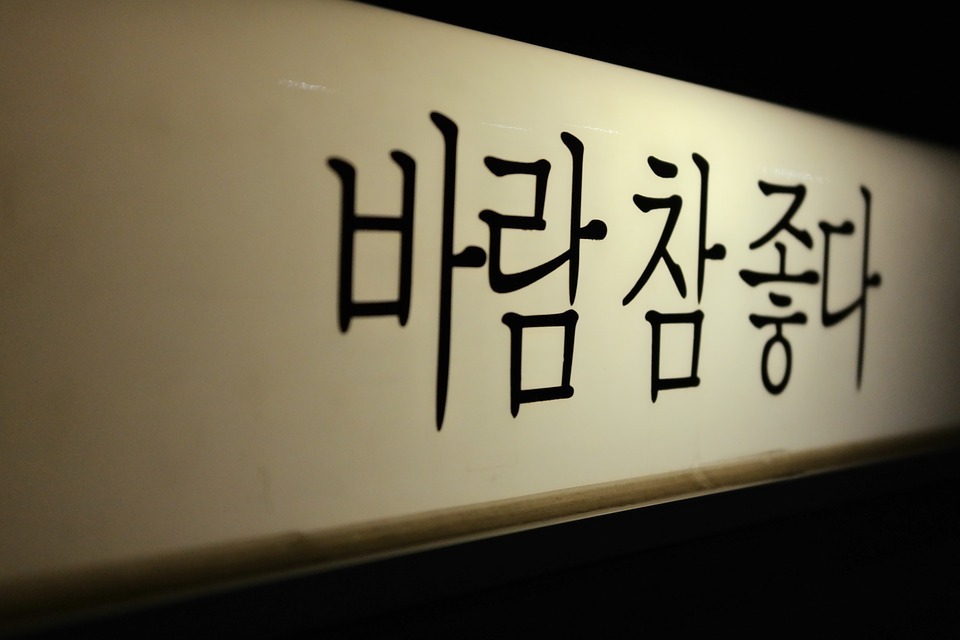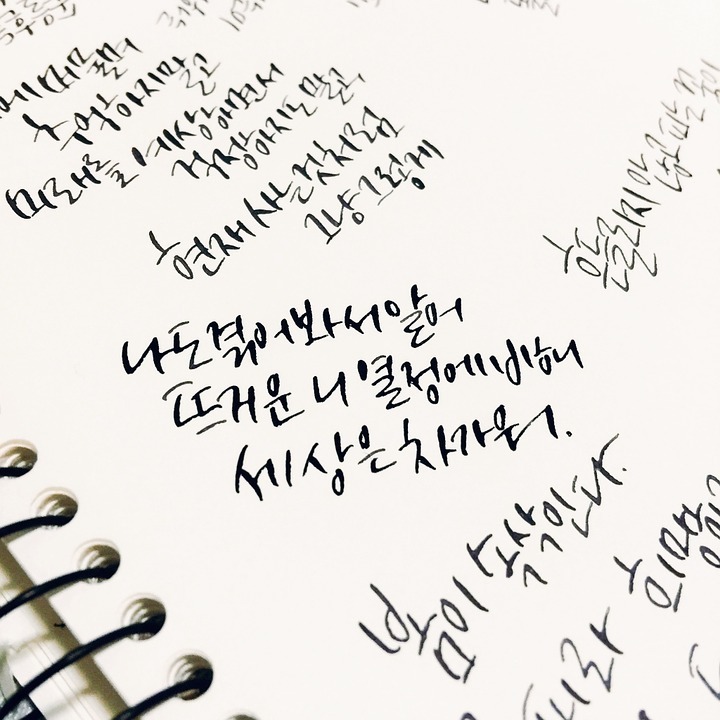The Korean language, named hanguk-eo in South Korea and chosŏn-mal in North Korea, is a language in East Asia that is spoken by more than 77 million people. A majority of those speaking the language mainly live in Korea, but several speakers can also be found in China (Yanbian Prefecture and Changbai County) as well as in Russia (Primorsky Krai).
In modern times, the Korean language is typically written in Hangul, an alphabet that was created during the 15th century by Sejong the Great, the king who ruled the Joseon dynasty from 1418 to 1450.
Before the creation of Hangul, there have been many writing systems developed in Korea, but most of these systems were difficult to learn and can only be used by the elite. As such, Hangul was born out of the need to simplify the writing system in the country.
How was King Sejong able to develop a more straightforward writing system in Korea? Let’s dive into the rich history of the Korean language to see the birth of Hangul and how it developed over the centuries.
The Proto-Korean Language
Linguists believed that the first Korean language was used during the Bronze and Iron Ages in Manchuria, located to the north of Korea. The people who spoke the Proto-Korean Language then traveled south, where they met the Yayoi people, an ethnic group that will eventually migrate to the Japanese archipelago.
Through their co-existence and assimilation with the Yayoi people, who mainly spoke the Japonic languages, the Proto-Korean were able to spread the use of their language in the land.
The Creation of Hanja
During the years before the birth of the Three Kingdoms in the 1st Century BC, Buddhism became a prominent religion in Korea due to the influence of the Chinese. Also, since most of the Buddhist texts are written in Chinese during that time, Koreans started to incorporate Chinese characters into their language. The incorporation of these foreign characters prompted the creation of a set of logograms called Hanja.
For many centuries, Hanja has been used as the main script to write the Korean language, and several scripts were also developed using Hanja like Hyangchal, Gugyeol, and Idu. Due to its complexity, it takes a lot of time to master writing Hanja. The difficulty in writing Hanja made the script only accessible to the elite and scholars who had plenty of hours to learn how to write it.
The common people of Korea, who had no time to learn the elaborate script and instead used their hours doing manual labor, were illiterate because of this problem.
However, during the 15th century, King Sejong found a solution to the problem of illiteracy in Korea by creating a new script that is easy to learn and read. This script is called Hangul, the most widely used alphabet in North and South Korea today.
Hangul, the Colloquial Script
King Sejong understood that Hanja is a complicated script to write not only for the ordinary people but for several elites as well. At first, he intended to create an alphabet as an aid to further understand Hanja, but Hangul was further developed into a script that can stand on its own. Due to how easy the new script is to understand, King Sejong was able to spread the use of Hangul in Korea quickly.
It is said that learning Hangul is so effortless that the popular saying, “a smart man can learn Hangul before the morning ends, while a stupid man can learn it in just 10 days,” was regularly used by those who learned it after the completion of King Sejong’s project in December 1443 or January 1444.
Hangul was also described and used in the document called Hunminjeong-eum or “The Proper Sounds for the Education of the People.” The popularity of this document led to Hangul being first called eonmun (colloquial script); a name derived from the document’s title.
On the other hand, some politicians like Choe Manri, as well as a few scholars insist that Hanja should be the only official script used in Korea. They tried to disregard Hangul as an official alphabet in the country because it is considered “barbaric” for a country to make their script that is not based on Chinese tradition.
This movement to eliminate Hangul in the Korean language was further strengthened when a document that criticized King Yeonsangun was published in 1504, prompting the king to ban the study of Hangul in the land. His successor, King Jungjon, then terminated the Ministry of Eonmun in 1506. The ministry was established to develop and popularize the use of Hangul in Korea.
The Revival of Hangul
During the late 16th century, after the rise of sijo and gaja poetry, which used Hangul, the script became popular once again. In addition, novels that used the colloquial script became famous among the common people during the 17th century.
The Hangul-written books became so popular that a Dutch scholar named Isaac Titsingh brought home with him a book written in the said script after visiting Korea in 1796. This book is a Korean translation of the Japanese text named Sangoku Tsuran Zusetsu or “An Illustrated Description of Three Countries,” which was written by Hayashi Shihei. The text serves as the first exposure of Europe to Hangul.
After reading the text thoroughly, Tstsingh then translated the book into French. The translation was later published posthumously by Pierre Abel-Rémusat and Julius Klaproth. The publication of the French-translated text was supported by the Oriental Translation Fund of Great Britain and Ireland in 1832.
Because of the publication of the text in Europe, Western missionaries in Korea supported the use of Hangul in schools. This support was then backed by the Gabo Reformists’ claim to revive Hangul and serve as an official alphabet in the country. These actions led to the use of the script in elementary schools and official documents in 1895. Then in 1896, the first newspaper to use both Hangul and English was created. The name of this newspaper is Tongnip Sinmun, also known as The Independent, in its English-translated form.
Hangul during the Japanese Rule
When Japan annexed Korea in 1910, they made Japanese as the official language in Korea. The Japanese government banned early Korean literature and texts in schools, but Hangul was still taught in schools around the country.
Due to the many changes that occurred to the Korean alphabet during this period, the linguist Ju Si-gyeong replaced the term Eonmun to Hangul to distinguish the early Hangul alphabet from the present one. Ju Si-gyeong then established the Korean Language Research Society in 1912 to study the changes made to Hangul after the Japanese annexation.
However, all of Ju Si-gyeong’s efforts were erased in 1938, when the Korean language was banned in schools, as Japan wanted to assimilate their culture and language to Korea fully.
The Split of Hangul
When Korea received independence from Japanese rule in 1945, the country was split into two states by the United States of America and the Soviet Union. North Korea was controlled by the Soviet Union, while South Korea was governed by the US.
The split also led to two distinct Korean alphabets. In 1953, the then-president of South Korea, Syngman Rhee, wanted a simpler alphabet that was first developed in 1921, while North Korea continued to add new letters to the alphabet to make it more morphophonemic. Currently, North Korea has 40 letters in its alphabet, while South Korea has 24.
Because of its significance to the rich history of their language, Koreans have created Hangul Day to celebrate the creation of this unique alphabet. In South Korea, Hangul Day is on October 9, the publication date of the Hungminjeon’eum, while North Korea set the holiday on January 15, the presumed day when King Sejong’s project ended in 1444.
The Korean language is becoming widely used not only by Koreans, but also by a lot of people around the world because of the rising popularity of Korean pop music, TV shows, and movies. More people are starting to learn Hangul as they see the alphabet as a bridge to know more about Korean pop culture. You should try to learn Hangul too and see if the saying that you can learn it before the morning ends is true.

